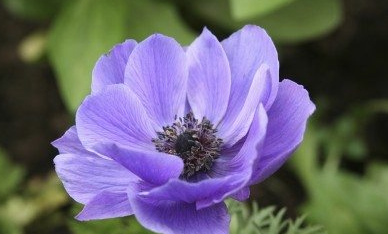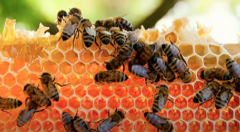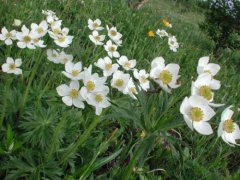The growth position of sea anemone varieties is different, how to plant and care for sea anemone tubers.
Anemone plants have low clumps of leaves and colorful flowers. Commonly known as Pulsatilla, these carefree plants are commonly found dotted in the landscape of many home gardens.
There are several types of anemones, including spring flowering and fall flowering varieties. What is interesting, and even a factor in anemone plant care, is that each of these types is growing. For example, a spring-flowering anemone plant will usually grow from a rhizome or tuber. However, autumn flowering types usually have fibrous or lumpy roots. You can grow anemones anywhere. However, their location should be treated with caution, as their spreading habits can become quite aggressive. Therefore, when planting anemones, you may want to consider placing them in bottomless containers before putting them in the garden.
That being said, depending on your type, plant anemones in the spring or fall. Soak the tubers overnight before planting, then place them in well-drained fertile soil, preferably in a slightly shady area. Plant anemones about 3 to 4 inches deep on either side of them and space them about 4 to 6 inches apart. Anemone Floral Care Once established, the care of the anemone consists of watering only as needed and keeping old leaves removed by cutting back to the ground before new growth. In the spring, the rhizomes can be separated every two to three years. Block types are best separated during dormancy, usually in summer.

- Prev

The effect of less flowering of longan and litchi on honey yield, and the effect of warm winter decreased honey yield.
Affected by the warm winter and drought, the flowering rate of litchi and longan is only 20% this year, and the production of longan honey and litchi honey is also affected. Zheng Jinkun, director of Taiwan Beekeeping Association, explained that the output of longan and litchi honey this year is only 10%. Expect the Council of Agriculture
- Next

What is anemone? Introduction to planting methods and Flower cultivation of Anemone
Tall erect stems and deep leaves are covered with milky flowers, describing the tall anemone. What is anemone? It is a native North American plant with exuberant growth and diffusion characteristics, although not as bad as some relatives of sea anemones.
Related
- A course of planting techniques and methods on how to grow carrots
- How to plant the latest tulips?
- Is it better to pick tea in the morning or in the afternoon? When is the best time for tea to be picked? what is the third or fifth tea?
- Launch Yuanxiao Happy combination Haocha + Tea Yuan healthy Taste
- Penghu Tourism "Fireworks 20 Parade with You"
- 2022 West Lake Happiness holds "Digital Revitalization Voucher" and draws iphone13 and laptop.
- Banqiao Fuzhou social houses are designed to change start-up combined with police elimination to create a safe and livable environment
- The convenient measure of "mechanical weeding" in Xinbei has been abused and the Agriculture Bureau has imposed heavy penalties on the illegal land consolidation.
- Changgeng University Joins Hands with Four Memory Factories to Rescue Memory Talent Shortage
- The list of Taiwan's top 100 MVP managers is listed by the Director-General of the Farmers' Association of Sanxia District.

